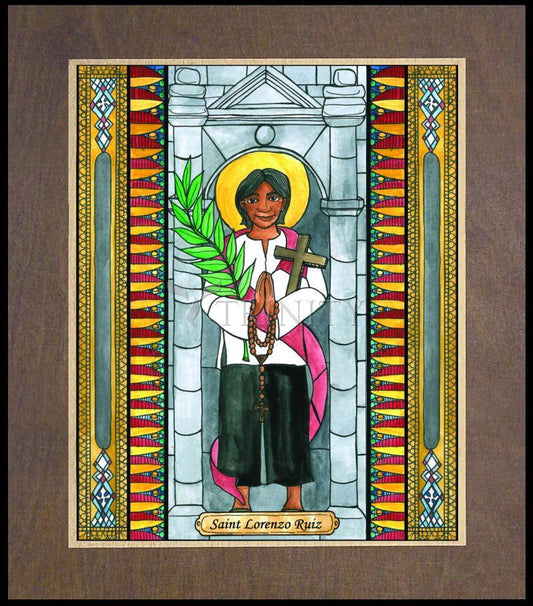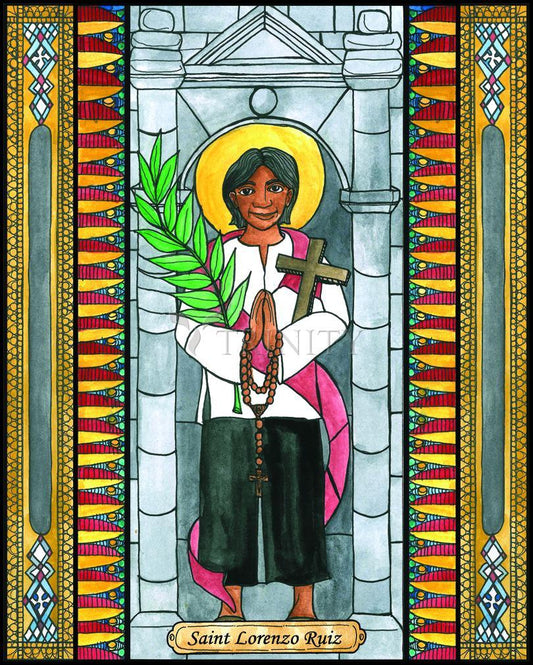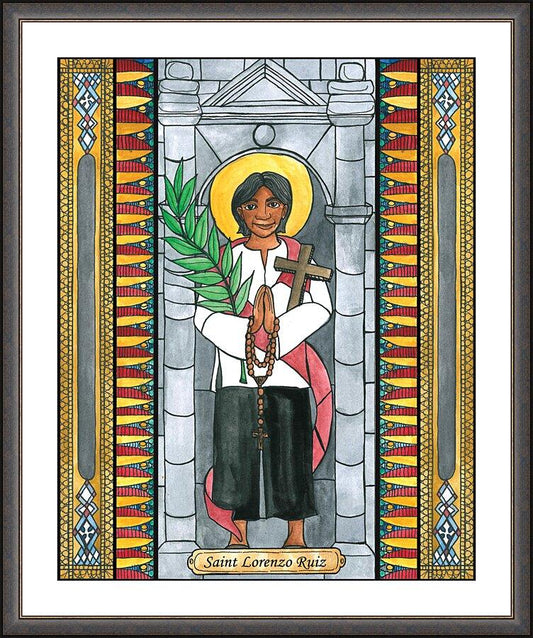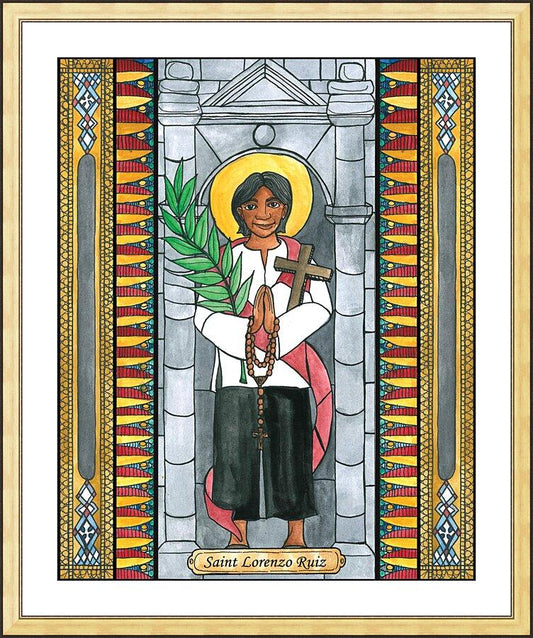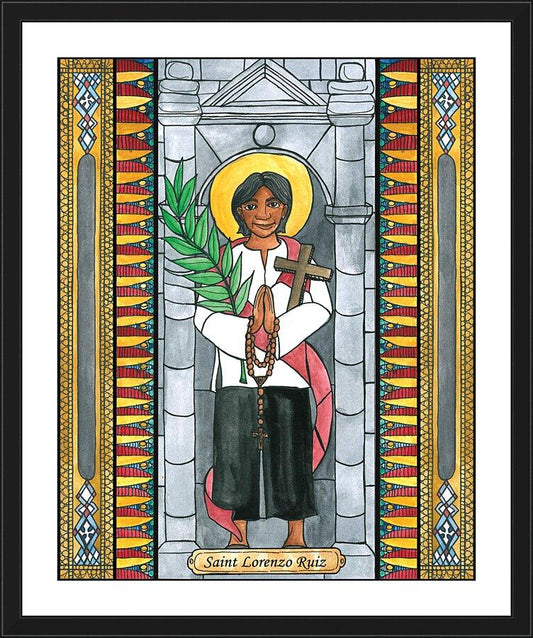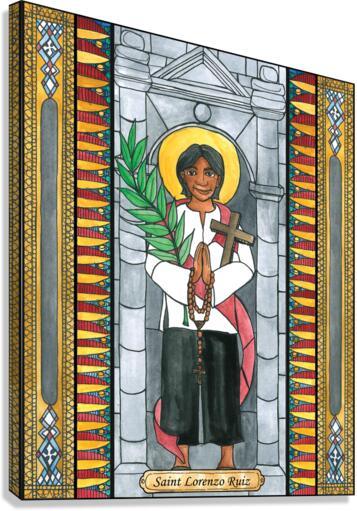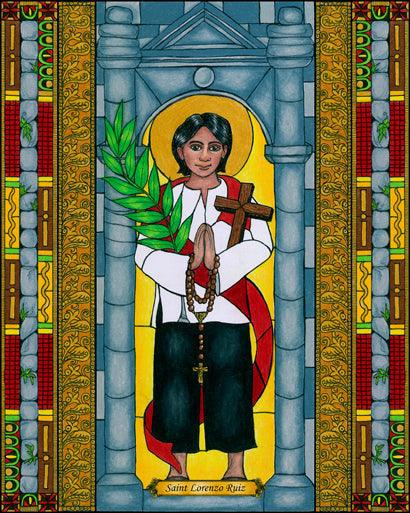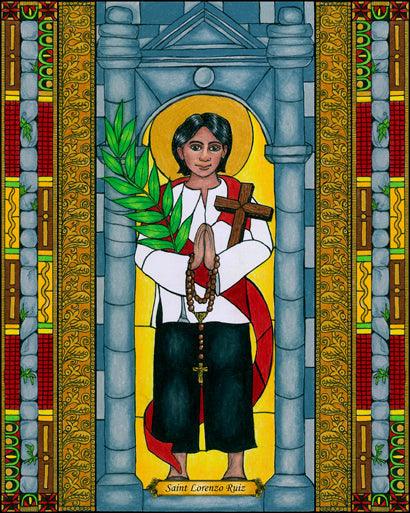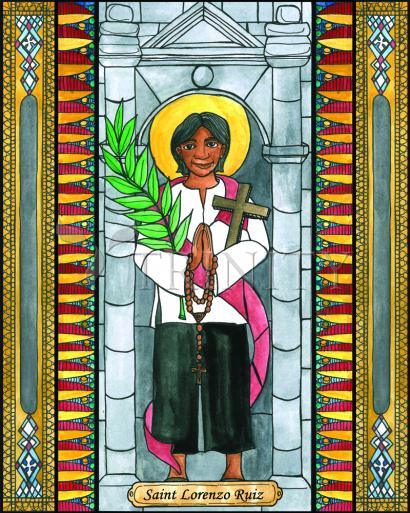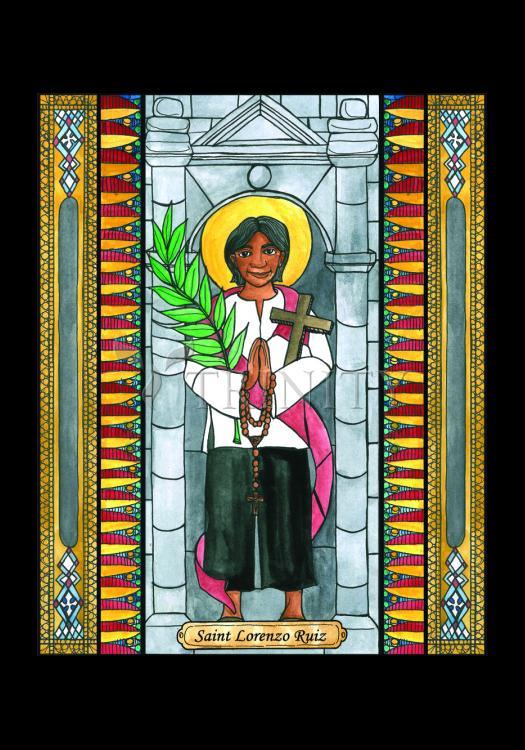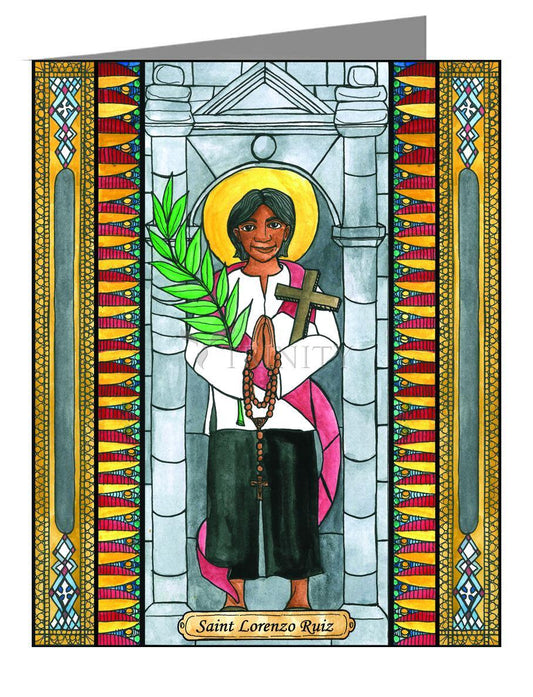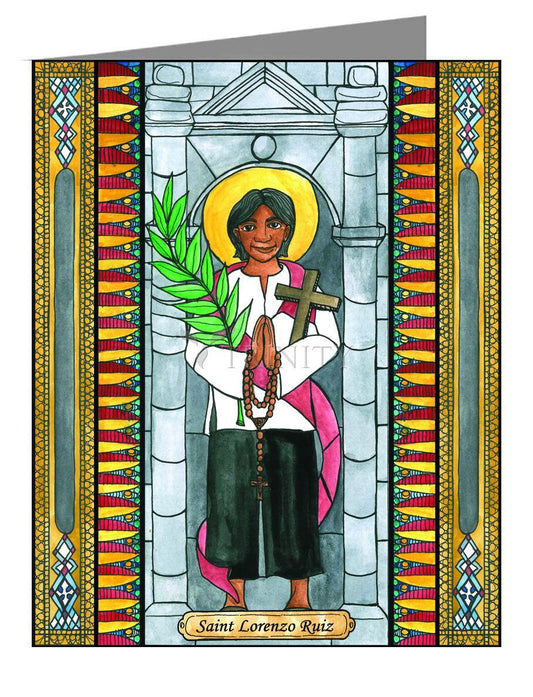Lorenzo Ruiz, the first Filipino saint, was a simple layman who died as a martyr for the faith. His extraordinary fortitude in the face of sufferings is an example that Christians must imitate.
Lorenzo was born in Binondo, Manila on November 28, 1594. He was among the many Filipinos in whose veins blended the mixture of two oriental blood: Chinese from his father and Filipino from his mother. Being of mixed parentage, he had the advantage over many children of his age for he could speak both the language of his father and his mother. He studied Spanish from the Dominicans who were in charge of the parish of Binondo, and from then he also learned the fundamentals of faith.
Lorenzo became an errand boy of the friars and also a sacristan. When he grew older, he was employed as an "escribano".
Lorenzo got married and was blessed with three children. Having been brought up in a Christian atmosphere, he directed his family towards an abiding trust and love of God. Lorenzo himself was a devout Catholic: he was a faithful Mass-goer, was among the few who were encourage to receive Holy Communion every first Sunday of the month, and was a great lover of the Virgin Mary. He joined the Confraternity of the Holy Rosary and spent some of his precious time in spreading the devotion to Mary.
Lorenzo was a happy man. All he dreamed of was to fulfill his obligations as a husband and father. But the serenity and peace he enjoyed was not meant to endure. He accidentally quarreled with a Spaniard and not long after he was accused of homicide. No one knew how true the accusation was but Lorenzo feared for his life so he sought to escape from Manila.
As if to answer to his desire, he learned that Dominicans were then preparing to embark on a mission in some place in the Orient. Lorenzo volunteered to join the group and with a heavy heart bade goodbye to his loved ones. The friars who must have known the trouble he was passing through did not hesitate to take him. Lorenzo's intention, however, was to remain in Macao and there earn a livelihood for his family.
The expedition was a clandestine one because the missionaries were going to a forbidden place, and due to unknown political reason, they did not pass macao, but sailed directly to Japan. It must be recalled that in those days Christianity in Japan was under siege. Christians were hunted down, put to prison and executed. When Lorenzo became aware that his plans were thwarted and that he was headed instead for another trouble, he was dismayed. But after some reflection, he changed his plan of working in Macao and decided to be a missionary himself.
Upon arrival in Okinawa, the missionaries set out to fulfill their mission in the forbidden country. They proceeded secretly and cautiously. But the Japanese proved more astute and clever. Not many days after their arrival, their presence was discovered and they were identified as believers because of their good behavior and chaste conduct.
The missionaries, now including Lorenzo, were arrested and thrown into prison where they were badly treated. After two long years, they were transferred to Nagasaki to face trial. The place for the trial was not a tribunal hall but a torture chamber, as it was customary for the interrogators to torture the prisoners while they were being questioned.
When Lorenzo's turn came, he was asked the following question: "If we grant you your life, are you willing to renounce your faith?" Lorenzo gave them a quick answer: "I am a Christian and this I profess, and although I did not come to Japan to become a martyr, I am now willing to give up my life for God. You can do with me whatever you please."
Lorenzo, like his companions, was sentenced to die. The place of the execution was Nishizaka Hill, Nagasaki, and a similar place to Calvary. Muzzled and handtied, the prisoners marched barefoot to the place. To inflict more sufferings to the victims, death was administered slowly and painfully. The punishment to which the prisoners were subjected differs one from the other. Lorenzo was hanged head down inside a small pit and only his limbs were seen from above the ground. His body was slightly bound with a rope to slow down the flow of blood and once in a while the torturer would make a slight cut on his flesh, Lorenzo remained in this condition for three days.
At the end of the third day, all prisoners were found dead. Their remains were burned and the ashes were thrown into the sea, near the Nagasaki harbor.
Lorenzo died a martyr for the faith on September 29, 1637. He and his companions were beatified in manila on February 18,1981 by Pope John Paul II. On October 18, 1987, after having proven the sanctity of his life through miracles, he was canonized in Rome by the same Pontiff.



